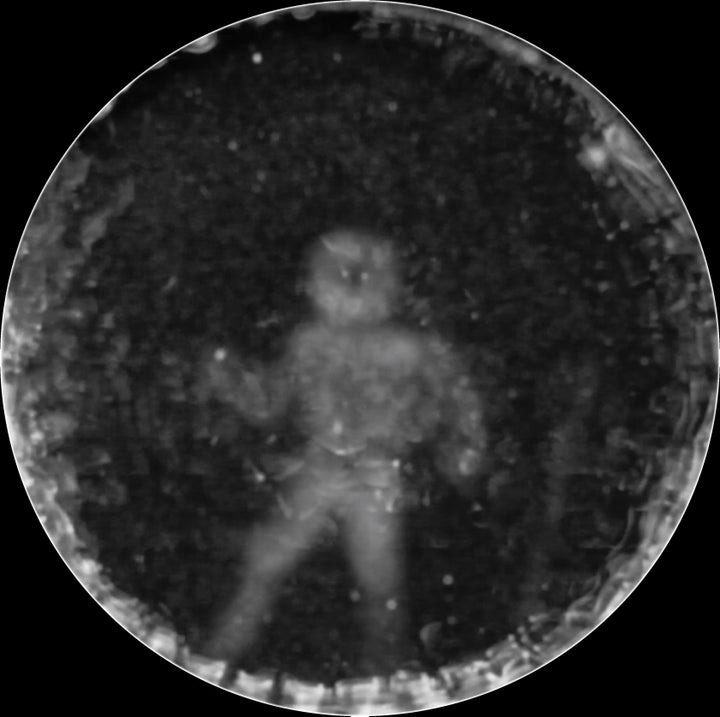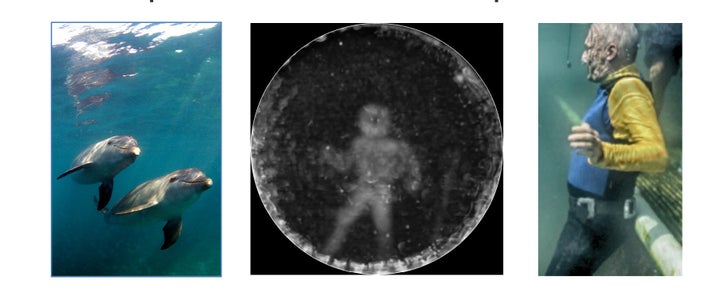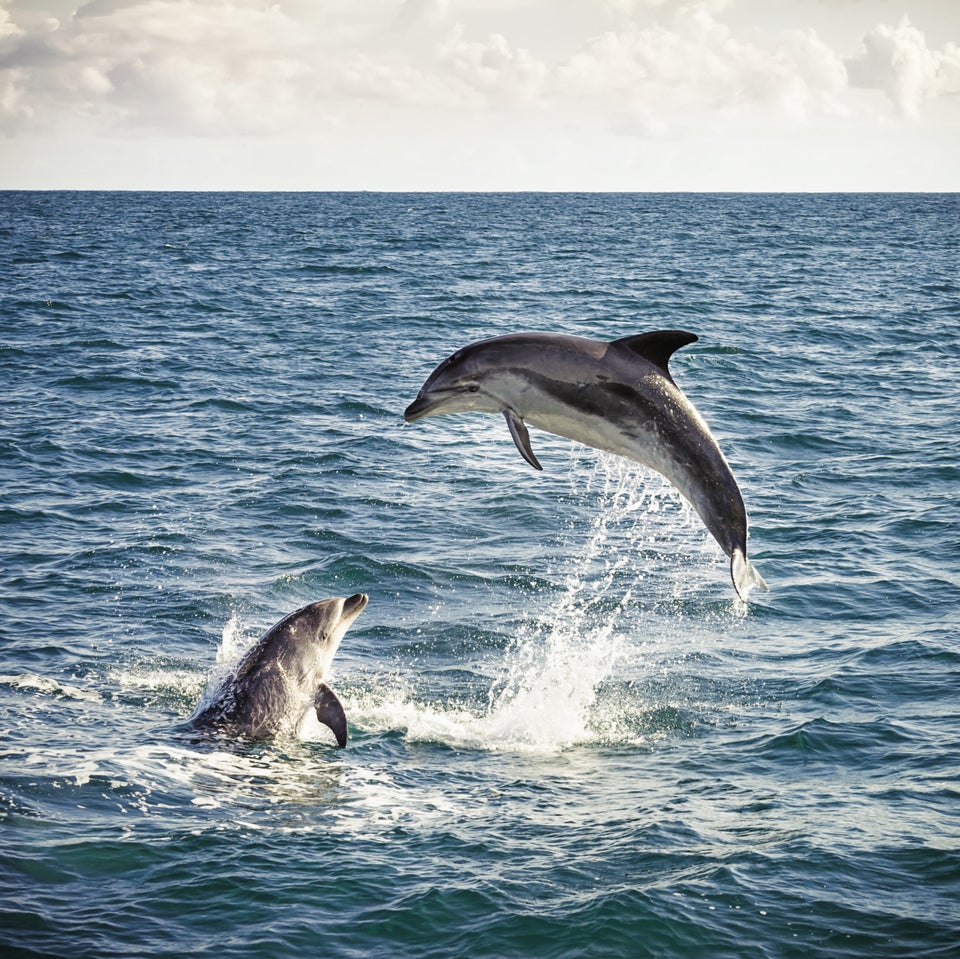Sea-ing is believing?
For the first time, researchers say they've recorded a dolphin's echolocation signals -- which are emitted when they perceive their surroundings by bouncing high frequency sound waves off objects -- and converted them into a visual representation of what the animal "sees."
Scientists at the Speak Dolphin organization in Miami used a device called a CymaScope to record data as a dolphin echolocated several different objects, including a human diver. With help from a 3D printing company by the name of 3D Systems, they then reproduced that data as a two-dimensional visual image:

They also created a more accurate 3D print (echolocation is believed to contain information about depth as well).
“Seeing the 3D print of a human being left us all speechless,” Jack Kassewitz, the founder of Speak Dolphin and the research team leader, said in a release. “For the first time ever, we may be holding in our hands a glimpse into what cetaceans see with sound.”
(In addition to perceiving the world around them with echolocation, dolphins also see with their eyes, much like humans do.)

“When a dolphin scans an object with its high frequency sound beam, each short click captures a still image, similar to a camera taking photographs,” explained CymaScope inventor John Stuart Reid. “Each dolphin click is a pulse of pure sound that becomes modulated by the shape of the object.”
Kassewitz said dolphins can identify objects when recordings of the original echolocation are played back to them, and have done so in experiments with 92 percent accuracy.
“We now think it is safe to speculate that dolphins may employ a ‘sono-pictorial’ form of language,” Kassewitz said. In other words, it's “a language of pictures that they share with each other.”
Holy mackerel! (Or, "Eee-ee-eeee-ee-e-eee!")
Also on HuffPost:

